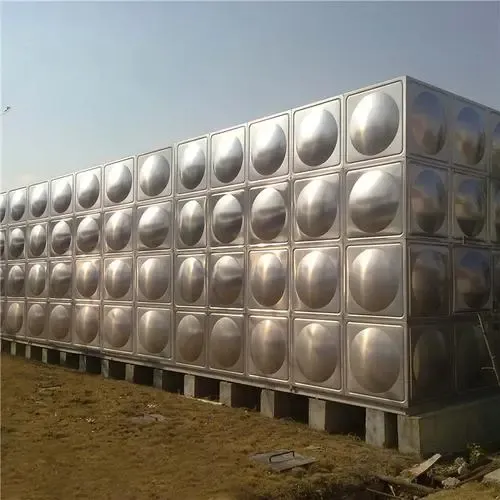loading...
- No. 9, Xingyuan South Street, Dongwaihuan Road, Zaoqiang County, Hengshui, Hebei, China
- admin@zjcomposites.com
- +86 15097380338
- Welcome to visit our website!
Exploring GRP Open Mesh Gratings for Versatile Applications and Enhanced Performance
The Significance of GRP Open Mesh Grating in Modern Infrastructure
In contemporary construction and industrial applications, the importance of material selection cannot be overstated. Among these materials, Glass Reinforced Plastic (GRP) open mesh grating has emerged as a standout choice, offering durability, safety, and lightweight properties that cater to a variety of needs. This article delves into the essential features, advantages, and applications of GRP open mesh grating, illustrating its growing significance in modern infrastructure.
What is GRP Open Mesh Grating?
GRP open mesh grating is a composite material made from thermosetting resins reinforced with glass fibers. The production process involves embedding glass strands within a resin matrix, which creates a robust yet lightweight flooring solution featuring an open mesh design. This open structure allows for excellent drainage and ventilation, making it an ideal choice for various environments, particularly those where fluid exposure is a concern.
Key Advantages
1. Lightweight Construction One of the most significant benefits of GRP is its light weight compared to traditional materials like steel or concrete. This feature simplifies handling and installation, reduces transportation costs, and decreases the load on supporting structures, making it an attractive option for numerous applications.
2. Corrosion Resistance GRP is inherently resistant to a variety of chemical environments. Unlike steel, which can rust when exposed to moisture, GRP does not corrode, providing longevity and reducing maintenance costs over time. This quality is particularly valuable in industries such as wastewater management, chemical processing, and marine applications, where exposure to harsh conditions is routine.
3. Safety Features The open mesh design of GRP gratings enhances safety by providing slip-resistant surfaces, making it ideal for walkways, platforms, and ramps that may become wet or greasy. Additionally, the material is non-conductive, ensuring safety in electrical environments and minimizing the risk of accidents.
4. Environmentally Friendly With an increasing focus on sustainability, GRP offers a more environmentally friendly alternative compared to traditional materials. The manufacturing process involves fewer emissions, and the grating itself is often recyclable, aligning with the goals of reducing waste and ecological impact.
grp open mesh grating

Applications of GRP Open Mesh Grating
The versatility of GRP open mesh grating allows it to be employed in various sectors
- Industrial Applications GRP grating is widely used in factories and warehouses for flooring, walkways, and platforms. Its ability to support heavy loads while resisting chemicals makes it a favored choice in manufacturing environments.
- Water Treatment Plants Given its corrosion resistance and ease of maintenance, GRP grating is commonly found in water treatment facilities. It can be utilized in packaging areas, walkways, and platforms around tanks, helping to create a safe and efficient work environment.
- Marine and Coastal Structures The marine industry benefits significantly from GRP open mesh grating due to its resistance to saltwater, UV radiation, and other environmental factors. It is often used in docks, piers, and other coastal applications where durability is key.
- Public Infrastructure GRP grating is increasingly being used in pedestrian walkways, bridges, and public parks. Its safety features coupled with aesthetic options allow it to blend seamlessly into public spaces while providing necessary functionality.
Conclusion
In summary, GRP open mesh grating represents an innovative and effective solution for modern infrastructure needs. Its lightweight, durable, and corrosion-resistant properties make it a preferred choice in various applications, from industrial settings to public infrastructure. As society continues to focus on sustainability and safety, the adoption of materials like GRP will likely become even more widespread, establishing itself as a cornerstone in the future of construction and design. The ongoing development of GRP technologies promises to provide even more advanced solutions for the challenges of tomorrow, reaffirming its place as a vital component in the architectural landscape.
-
The Rise of FRP Profiles: Strong, Lightweight, and Built to LastNewsJul.14,2025
-
SMC Panel Tanks: A Modern Water Storage Solution for All EnvironmentsNewsJul.14,2025
-
GRP Grating: A Modern Solution for Safe and Durable Access SystemsNewsJul.14,2025
-
Galvanized Steel Water Tanks: Durable, Reliable, and Ready for UseNewsJul.14,2025
-
FRP Mini Mesh Grating: The Safer, Smarter Flooring SolutionNewsJul.14,2025
-
Exploring FRP Vessels: Durable Solutions for Modern Fluid HandlingNewsJul.14,2025
-
GRP Structures: The Future of Lightweight, High-Performance EngineeringNewsJun.20,2025
